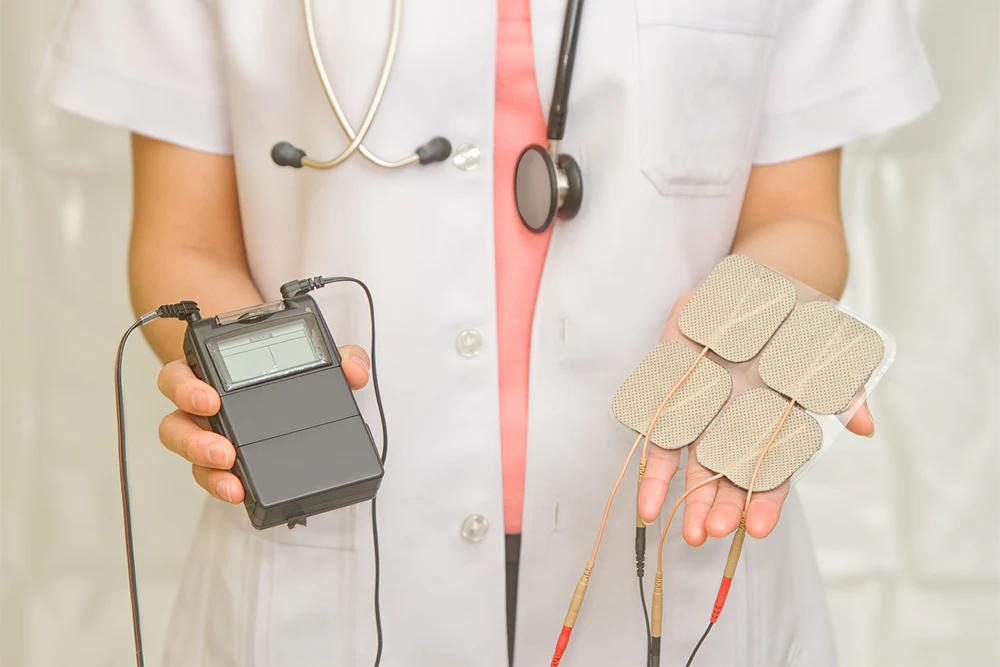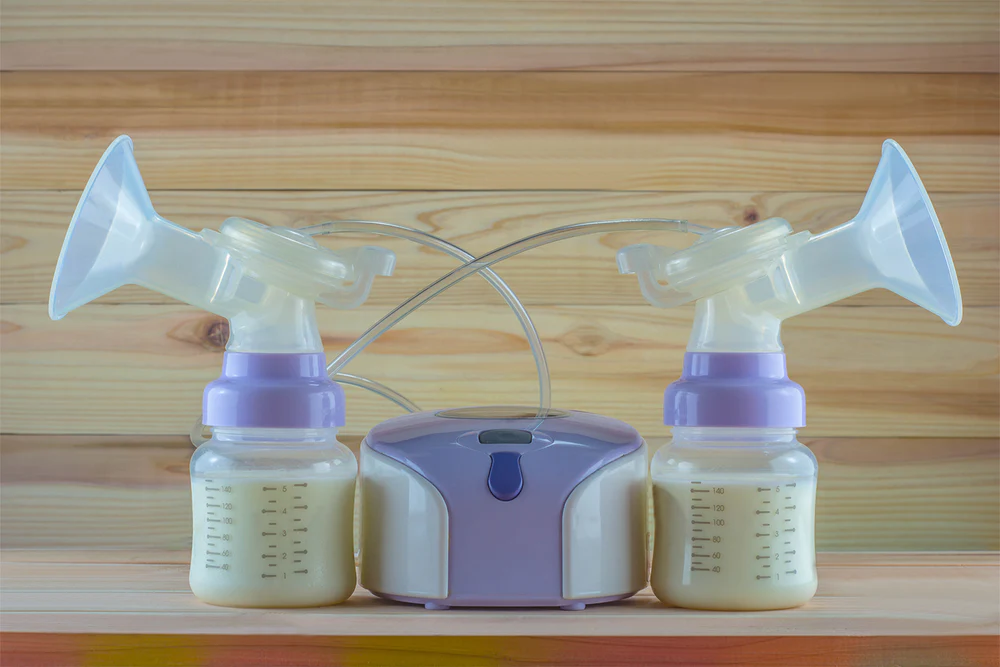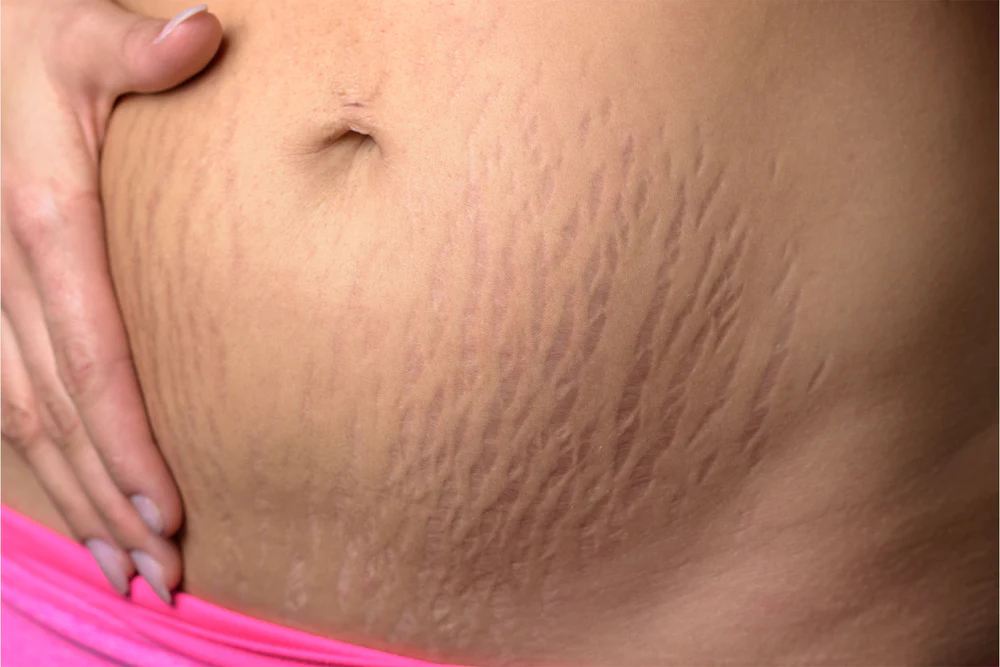Becoming a mama means being blessed with many things: constant snuggles from your little one, a new source of fulfillment in life, and…. back pain?
Lower back pain might not have been on your new-mom bingo sheet, but unfortunately, it’s an all too common symptom of going through pregnancy (and adulthood in general). Back pain can be frustrating at the best of times, but when paired with other pregnancy symptoms or the never-ending job of being a mom, it can feel nearly unbearable.
Whether your back pain is a symptom of pregnancy, an injury, or just part of getting older, you deserve relief. Pain medication is one option, but it isn’t the only possibility out there. Enter the TENS Unit from Mommy Care Kit. Our TENS Unit is a small battery-operated device that may be able to provide you with the relief you’re looking for.
If you want to learn more about mitigating your back pain and using a TENS Unit, you’ve come to the right place. Keep reading for our full guide to using a TENS Unit to relieve your back pain ASAP.
What Is a TENS Unit?
A TENS Unit, or Transcutaneous Electrical Nerve Stimulation Unit, is a small device that sends low-voltage electrical impulses into your skin to help relieve pain.
The impulses are delivered by electrodes placed on the surface of the skin where the pain is occurring. For instance, with lower back pain, the electrodes would be placed on the small of your back. If you were experiencing hip pain or wrist pain, the electrodes would be placed over those regions instead.
There are two theories as to how TENS Units work. One possibility is that the electric impulses trigger nerve cells to block pain transmission — you can think of it like a stoplight, keeping the nerves that send pain signals stuck at a red light.
Another possibility is that the impulses stimulate endorphin production, which effectively blocks out the perception of pain. In the same way that you might not feel an injury during an adrenaline rush until after the adrenaline has faded, the endorphins can help trick your body into not feeling the pain wherever the electric impulses are located.
Although scientists aren’t sure exactly which theory is correct or if the answer is a combination of both theories, we DO know that many people have been able to find pain relief by using these handy little machines.
TENS Units have been shown to help ease joint pain, labor pain, and neck and back pain, as well as the pain associated with many medical conditions, such as fibromyalgia, endometriosis, and arthritis.
How To Use a TENS Unit for Back Pain
Now that we’ve covered that TENS Units can make a big difference, it’s time to review how these devices are used.
TENS Units come with controls that allow users to adjust different elements of the electric current, including the intensity, frequency, and duration of the impulses. Once the electrodes are placed on the location of the pain — in this case, the lower back. You can spin a dial to adjust these different aspects until you find one that works for you.
Which level of intensity works best and how long the pain relief lasts is completely personal and differs for each user. Some people find themselves to be pain-free for a whole 24 hours after using the machine, while for others, the pain relief only works while it’s in action. Ask your healthcare team to help you experiment with different intensities and routines to find one that works the best.
Is the TENS Machine Safe For Everyone?
While TENS Units are generally considered safe and effective, there are a few circumstances when they should be avoided. Experts recommend that the following groups of people avoid using a TENS Unit (unless their doctor specifically advises them to):
- Pregnant women: avoid using a TENS machine in the pelvic or abdominal area.
- People with epilepsy: avoid using a TENS machine on the head or neck.
- People with heart conditions
- People with a pacemaker or similar type of electrical implant
If you aren’t sure whether a TENS Unit is the right solution for you, talk to your doctor or another healthcare provider before using one. They’ll be able to determine the best course of pain relief and whether that includes using a TENS device.
Other Solutions for Pain Relief
If using a TENS machine isn’t the right solution for you, don’t freak out — there are other options to help you get your lower back pain under control. Back pain can be persistent and frustrating, but there’s no reason it should control your life!
Physical Therapy
One of the best options at your disposal is seeing a physical therapist. In fact, experts say that exercise and therapy are often the first steps you should take in treating back pain. Note that the specific types of movements and exercises should be targeted toward the cause of your pain.
Before beginning any type of physical therapy regimen, talk to your doctor, and get their recommendations for a certified physical therapist who can assess your pain and make tailored suggestions. They’ll likely help you work on your posture, flexibility, and core strength, among other things.
Don’t lose hope if progress is slow at first. PT isn’t an instant solution; it will likely take several weeks or longer of consistent work before you begin to see results in your pain relief. Just because you don’t see progress immediately doesn’t mean the physical therapy isn’t working!
How To Help Manage Your Pain
If your back pain is thanks to pregnancy, certain treatments — such as a TENS Unit or prescription pain relief — might be off the table. But that doesn’t mean you have to suffer until your due date. There are plenty of tools out there designed to help lighten the load of your watermelon tummy.
One option you might try is investing in a lower back support wrap, which wraps around your waist and eases the burden of your growing little one. Or you might try a belly belt, designed to engage your core and improve your posture, both of which can help take the stress off the spine and back.
These tools fall under the category of manual replacements for the core muscles you lose during pregnancy and can help ease your pain while you recover from pregnancy and delivery. They’re great solutions on their own but will be most effective when paired with a healthcare professional-guided exercise routine to help strengthen your core and back muscles.
Lifestyle Changes
Another possible pain management strategy your doctor may suggest is a diet change. Diets high in refined sugars and trans fats can be inflammatory, which can exacerbate or contribute to joint pain, including in your lower back.
They may also suggest making certain lifestyle changes. If you have an office job, for example, they may suggest alternating between a sitting and standing desk or getting up and walking around the office at least once every hour.
Medical Solutions
Finally, injection-based procedures and pharmacological solutions are a possibility, although these may not be an option for pregnant women. Injection procedures and prescription pain medication can be expensive and carry the risk of overuse. Talk to your doctor to ensure you’re being as safe as possible.
The Bottom Line
Whether you’ve been considering it for a while or you’re a total newbie to the world of the TENS Unit, don’t be afraid to ask your doctor about using one today to ease your lower back pain. Easy to use and effective, a TENS Unit might be what you need to get back to chasing your little one around the house with minimal pain and discomfort.
And if a TENS Unit isn’t right for you, talk to your doctor about other mama and baby-safe options for treating your back pain. Whether you’re a seasoned parent, mama of a newborn, or pregnant, don’t suffer in silence — there’s a solution out there for your back pain, and no one deserves it more than you.
Sources:
Transcutaneous Electrical Nerve Stimulation (TENS) | Cleveland Clinic
TENS unit: Benefits, side effects, and research | Healthline
7 Ways to Treat Chronic Back Pain Without Surgery | Johns Hopkins Medicine
TENS unit: Benefits, side effects, and research | Medical News Today








